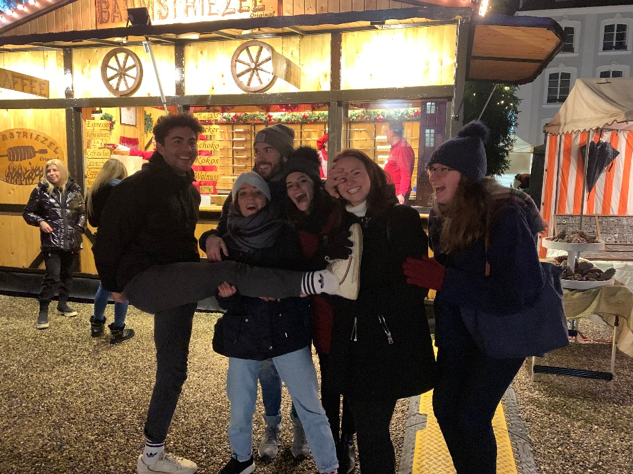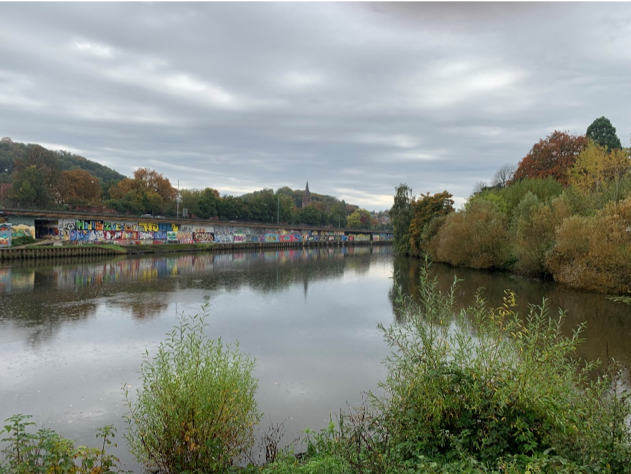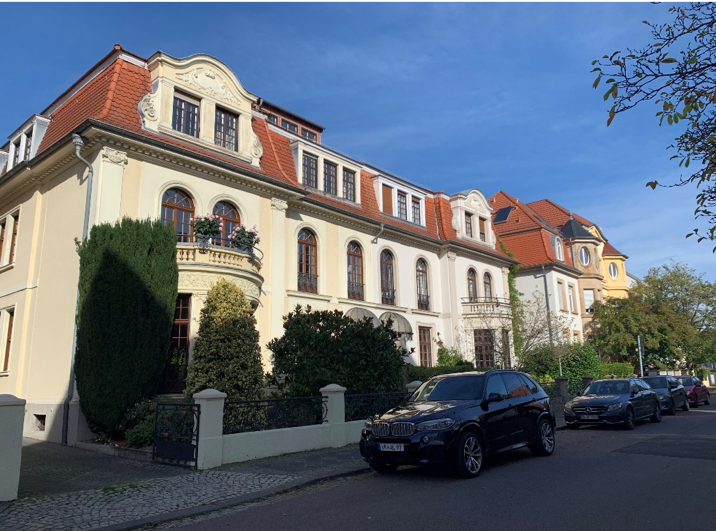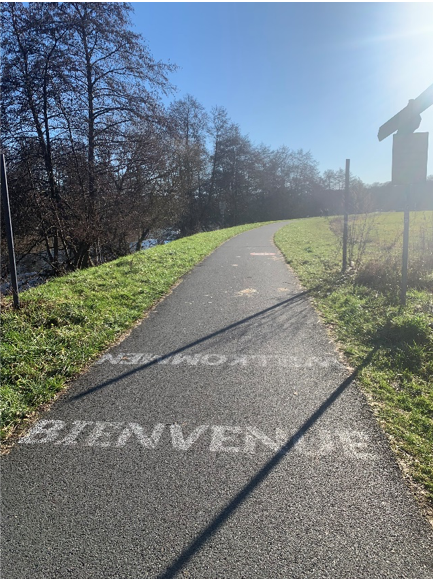Madeleine Hart (’17, Major in Psychology and Minor in German Studies) has a background in urban education, which, along with her work in conflict analysis with the Olive Tree Initiative, inspired her to pursue one of Germany’s prestigious Diversity Placements, which she received. According to Fulbright, the twenty Fellows (out of 140 total) who receive Diversity Placements are assigned to schools with “significant numbers of students with minority or refugee backgrounds,” and, like all ETAs in Germany, Diversity Program participants must “have the capacity to negotiate cultural differences and respond to challenges” in these dynamic environments.
Found below are Madeleine’s personal stories and experiences during her Fulbright:
Hello everyone!
I am writing an update at the end of month six of my ten-month Fulbright ETA grant in Germany. Currently, it is 46 degrees Fahrenheit, but the sky is blue. Everyone here is hoping for an early spring!
I live in the city of Saarbrucken, which is located on the border of France about an hour south of Luxembourg. One of the biggest adjustments for me has been living in a small city – about 180,000 people – with no major metro area surrounding it.
I work in a Gemeinschaftsschule or “community school” which is meant to bridge the gap between the traditionally segregated college-bound Gymnasiem and trade school-bound Realschulen. The grade level at my school is 5th– 13th, but I mainly work with the 8th-10th graders. My placement in Fulbright Germany is considered a “diversity placement,” so my school has a very diverse population. About 85% of my students have a “migration background,” and I have a few classes where only one or two students in the class were actually born and raised in Germany. When students feel comfortable sharing personal details, it can be a really cool education environment where students learn about each other’s backgrounds and cultures. The challenging side of this, however, is that some students do not have a solid German language foundation, causing them to have some issues learning English in a German-to-English learning environment.
My day-to-day in the classroom usually consists of either team-teaching lessons with a teacher or taking small groups of students into the discussion rooms that are attached to the classrooms and reading English language readers together. I try to use as little German as possible, so I’ve taken to drawing out scenes of the book that they don’t understand. In some classes, we’re reading Frankenstein, which is a pretty gruesome story. It’s hilarious when I attempt to illustrate the more heinous details of the story in my hastily-drawn cartoons, and it breaks up the reading for the students so we can all have a laugh.
I think the thing that has made the single biggest impression on me are some of the social problems in Germany that I wasn’t privy to before my arrival. Because of Germany’s tragic history, there is an awkwardness around the topic of race. In fact, the word “race” in German is considered taboo to even say; the generally accepted attitude is one of “colorblindness.” Yet, racism is as much a problem here as it is in the United States. As previously mentioned, the majority of my students are not German, and many of them have confided in me experiences of racism or xenophobia they’ve experienced, and I have also personally witnessed it. While trying not to see race may be a well-intentioned attempt at inclusivity, in order to address the issue head-on we need the vocabulary to talk about it effectively. To measure and address issues like housing or job discrimination, for example, governments must first acknowledge there are people from various races living in the country.
This experience has reframed for me some of the social problems that the U.S. faces. Prior to my Fulbright grant, I was quick to criticize American values and laud what I perceived as being a progressive utopia in Germany. While I still feel that our system is broken, I now have more nuanced views of both countries and see so much more possibility for change and growth in the U.S. than I did before. We are working with a blueprint for identity that is fundamentally different from the one that is used in Germany and riding the current of anti-racism toward – hopefully – some solutions. I feel so excited to come back to the U.S. as a future attorney and join the movement toward a better, more inclusive country.
Below are some of the photos Madeleine shared with us during her Fulbright —




